How-To: Ride Rocks
Rocks are a bit like Vegemite – some people love them, others hate them. Either way, in some shape or form, they feature in just about every off-road race. Knowing how to deal with the hard-as-iron chunks of terra-ferma can make the difference between finishing a trail, winning and losing, or between finishing an event or punching a race-ending hole in a clutch cover.
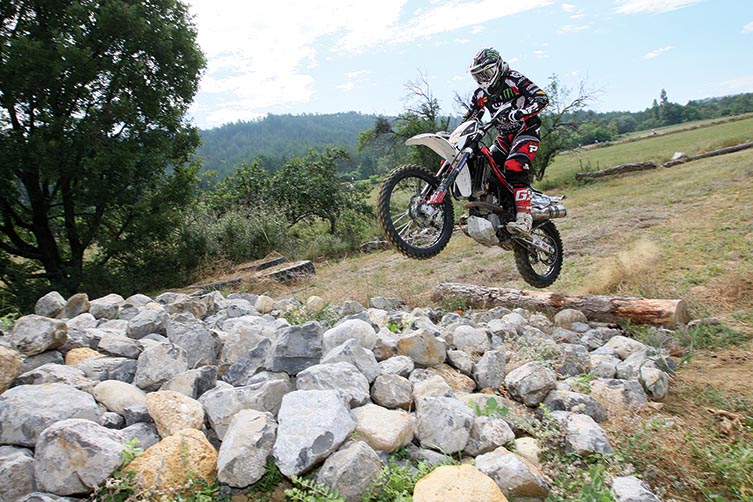
CH Racing Husqvarna’s Antoine Meo is one of the Enduro World Championship’s fastest and most consistent extreme test riders, which means he knows a thing or two about dealing with rocks. A former GP motocross racer – with no serious trials riding background – Antoine’s learned the hard way and replaced his once bulldozer-like technique with one that’s now all about finesse and commitment. Here Antoine explains what’s needed to not only cross rocks without crashing, but how to save energy and reduce the chances of damaging your bike.
This content was originally published in issue #3 of Transmoto Dirt Bike Magazine in Aug, 2010.

WHERE TO LOOK
The statement, “make life as easy as possible for yourself,” certainly applies when riding rocks. Why ride up a six-foot step, and risk getting stuck or damaging your bike, if there’s a much easier line only a few metres to your left or right? Looking at the terrain around you and making decisions as to what line you want to take is hugely important. The best line across a section of rocks isn’t always the straightest, so be on the look out, and zig-zag from start to finish if it makes things easier. Riding rocks requires a lot of concentration, so you have to look close in front of your front wheel as well as far ahead of you. If you look too much at any one rock, or the hole between some rocks, you will probably hit that spot. Know what’s in front of you, but look where you want to go.
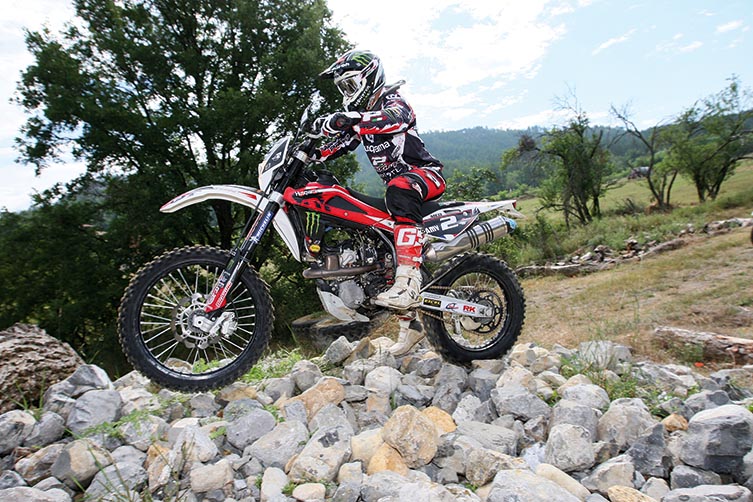
SITTING VS STANDING
Deciding whether it’s best to stand up through a section of rocks or sit down is the single biggest decision you can make and it depends on two things – how slippery the rocks are and how confident you’re feeling. If the rocks are slippery for whatever reason, it’s best to sit down – that way your feet are closer to the ground. If you do make a mistake and lose the frontend, you’ll have a better chance of correcting it. When the grip levels are good then it’s best to stand up. That way, you have a better feeling through the footpegs and can better feel the traction at the rear wheel. You also have much better balance when you’re standing up. Just look at trials riders – they never sit down. Standing up through rocks is all about confidence and control.
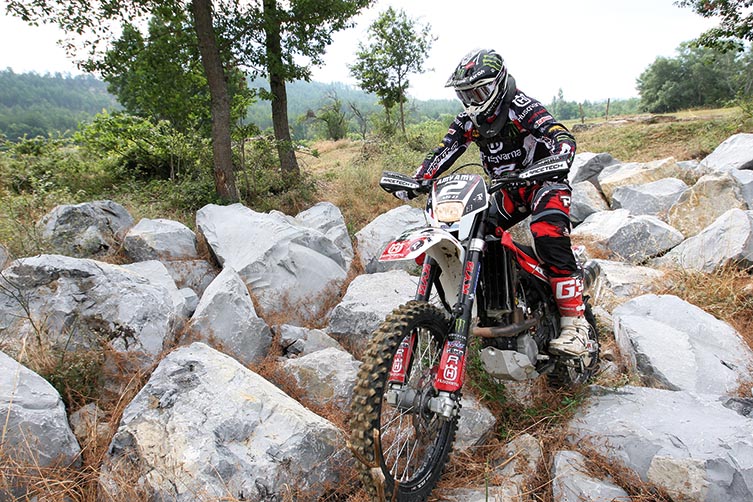
IN CONTROL & ON LINE
It’s not necessary to try and ride too fast – even if the rock section is in a special test – because if you catch a big stone you’ll likely get thrown off your bike, which is exactly the opposite of what you want. Momentum and not making mistakes is what gets a rider across rocks. Riding a little slower but maintaining speed is always better than going into a rock section hard, losing your speed and then having to try and regain it. Being smooth with the throttle helps make sure you cross rocks in control. You don’t want to rev the bike too much in a low gear, or be in a gear that’s too high – the aim is to keep traction at all times.

MIND GAMES
Speed across rocks is all about practising technique and confidence. By practising and watching others you’ll improve your technique, which will automatically improve your confidence. But it won’t happen overnight, especially if you’re not from a trials riding background. So many people don’t practice riding rocks, but are happy to spend all day riding grasstracks or in the forest. Roll up your sleeves and get stuck into a section of rocks when you go out practising, or at least practise improving your slow-speed bike control – you’ll be amazed how quickly you will improve. Just remember to lose the speed. Start off small, think about what you are trying to do, and believe you can do it. Most people talk themselves out of a rock step before they’ve even tried it – don’t be one of them.
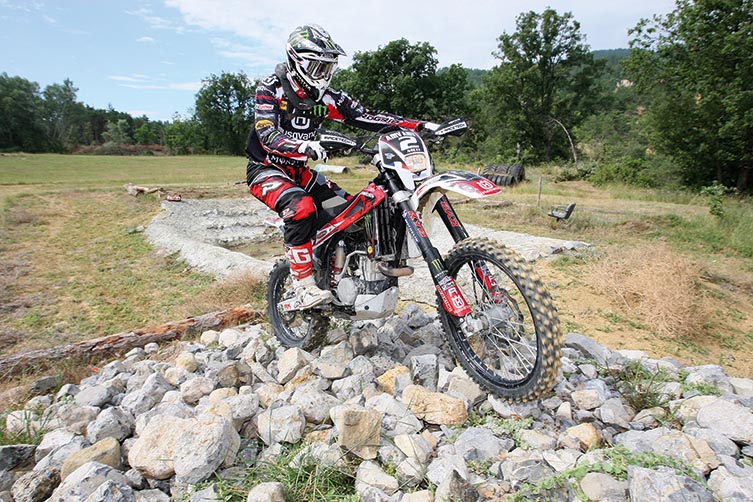
ACCELERATION
Don’t try and go too fast too soon. Hitting the first few rocks at 100mph and then bouncing off line or crashing risks damaging your bike and wastes time. Start at a speed you can manage and gently accelerate. Momentum is so, so important when you’re riding in rocks, because often you have to power off to make sure the rear wheel doesn’t spin when you cross big rocks and steps. Aggressive acceleration causes the rear wheel to spin, which makes the back of the bike jump around. Don’t be afraid to use higher revs, but don’t open the throttle too quickly. Be smooth when you open the gas. If you have to change gear then do it, but if the rock section isn’t too long, it’s often best to stay in one gear. Changing gear causes the rear wheel to lose traction. It’s better to start in a higher gear and use lower revs.
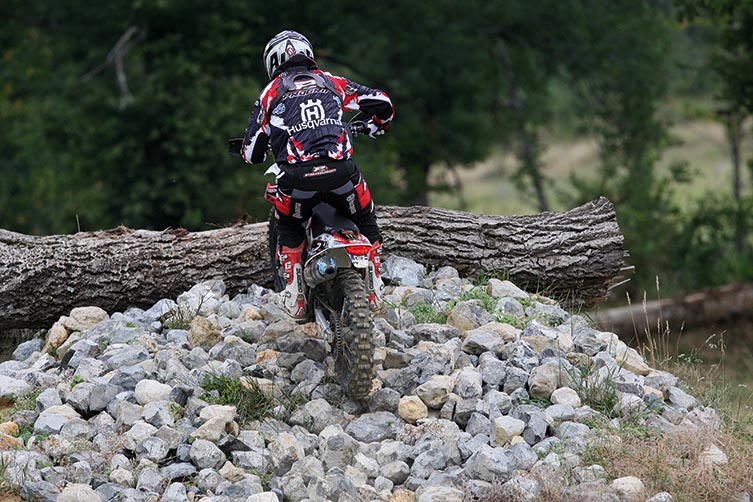
RELAX AND MOVE
Rocks are often unpredictable and move around underneath your bike. Being tense on a bike and fighting against its natural movement over rocks is a bad thing. You need to be flexible and move around on the bike. Look at Taddy Blazusiak on Youtube – he’s always all over his bike. Don’t fight your bike. You don’t need to ride in a technical rock section for long before your arms start to pump up, so you have to keep breathing and stay relaxed. Holding onto the handlebars too tight causes your whole upper body to get tired. Being light on the bike and able to move your bodyweight from one side to the other, and backwards and forwards, is essential. Finding a neutral position in the middle of the bike works best. Standing with your legs bent allows you to lower your weight, and this makes correcting mistakes easier. It will make your legs tired, so only do it for short periods of time when the rock section gets most tricky.

PUSH AND SHOVE
Sometimes there’s no option but to get off your bike and push. Rocks are unpredictable – as are the riders you might be crossing the rock section with – so it’s inevitable that as your confidence and speed grows, you’re going to get seriously stuck at some point. The key is to realise that you’re in trouble before you end up in a hole underneath your bike with a smashed waterpump cover. If you feel out of your depth, get off and walk your bike over the rocks. Always make sure your feet are where you want them before moving the bike, and move small distances at a time. Forget about momentum and take it rock by rock. Standing on one side of the bike, lean it towards you – never let it fall away from you. Keep looking ahead to find the best line and, like always with rocks, be smooth with the power.
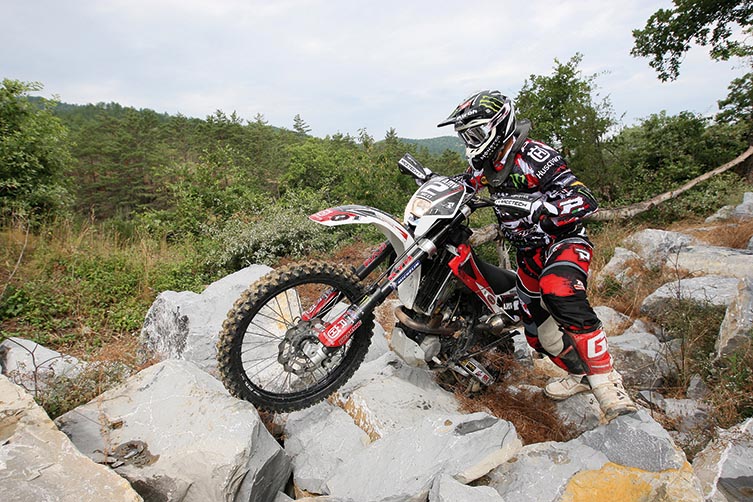
JUMPING IN
If you can jump into and over a section of rocks – or part of a section of rocks – it’s quicker, provided you can control your landing and maintain your forward momentum. Jumping into big, square rocks will only damage your bike, so only jump into round rocks.

You don’t need a big take-off point, but make sure it isn’t going to move. Accelerate towards whatever you use as the take-off point before easing off the power slightly. Then, compressing the suspension as much as you, can accelerate hard to generate the lift you’ll need. This should help send you up-and-into the rocks with the bike level.
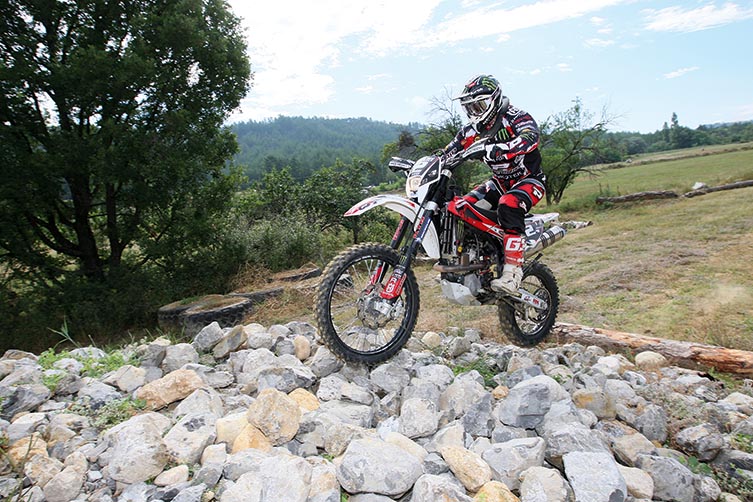
When you land, you want to do it both wheels at the same time. Where you land is as important as what you use as your take off point, as you want to come down wherever it’s smoothest. If you land lightly and in control you should have good momentum, so accelerate smoothly
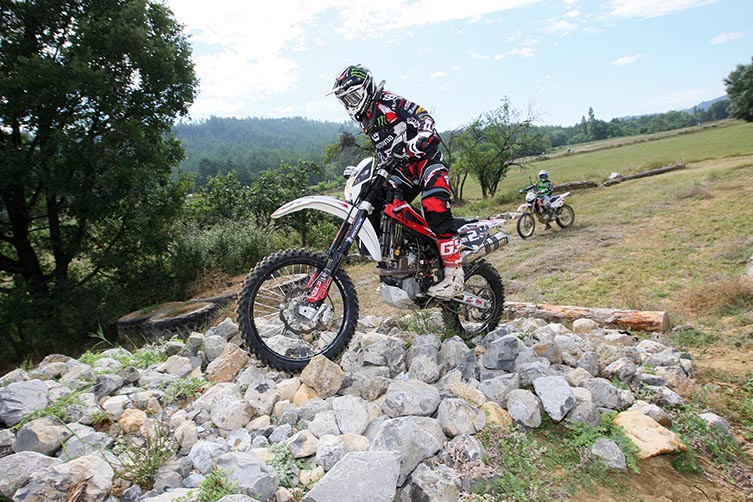
CHANGING LINES
It’s best not to move around too much once you’ve committed to entering a section of rocks, but from time-totime you have to. Try and make your movements as smooth and calm as possible – don’t chop the throttle, grab the brakes and sit down all at the same time. The secret is to look ahead and see early that you’ll have to change line . If the rocks are really big, slow down – stop if you have to – and work out where you have to go. Staying on top of the rocks is important, which is why you have to do it at low speed.
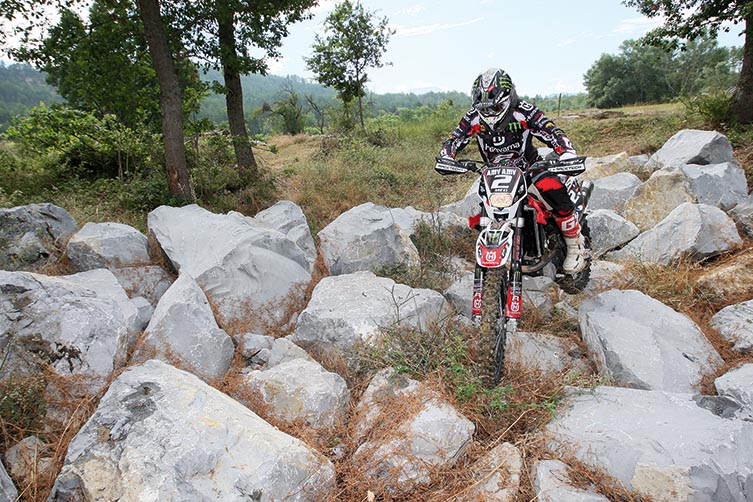
Don’t let your front wheel drop into a hole. If the rocks are smaller you shouldn’t stop, but keep looking forward and working out where you want to go, and turn the bike while keeping the power on a little. Riding with the balls of your feet on the footpegs allows you to feel what the bike is doing more effectively. By pushing down on one of the footpegs the bike will turn one way or the other, which is often enough to make subtle line changes. Keeping the front wheel as straight as possible is the safest bet. If you’re too aggressive in moving the front wheel it will wash out, especially on round rocks.
THE MAN BEHIND THE WHITEBOARD

Antoine Meo is proof that you don’t need to have a trials background to master rocks. Winning the first-ever Indoor Enduro World Cup race he entered – beating David Knight in the process – Meo has worked tirelessly during the last two years to make the transition from GP motocross rider to top-flight Enduro World Championship competitor. Today he leads the E1 class of the Enduro World Championship and is one of the most flamboyant and fun-loving riders on the international enduro circuit.
RELATED CONTENT

HOW-TO: WHIP WITH BEN TOWNLEY
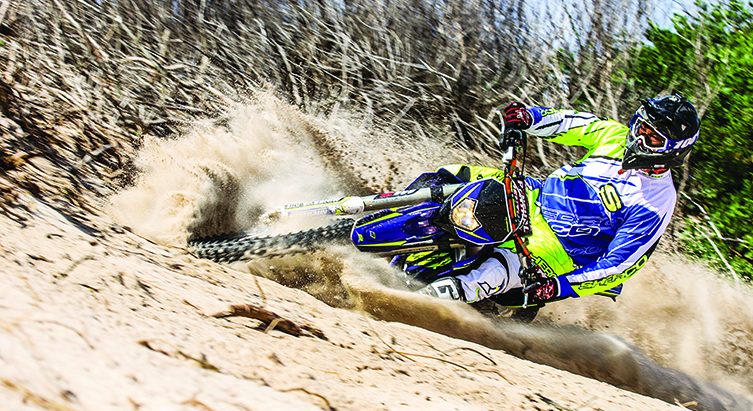
HOW-TO: RIDE SAND WITH MATT PHILLIPS
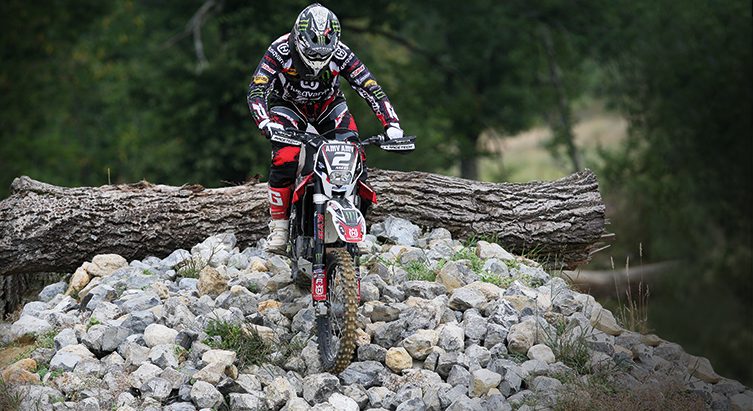








Be the first to comment...